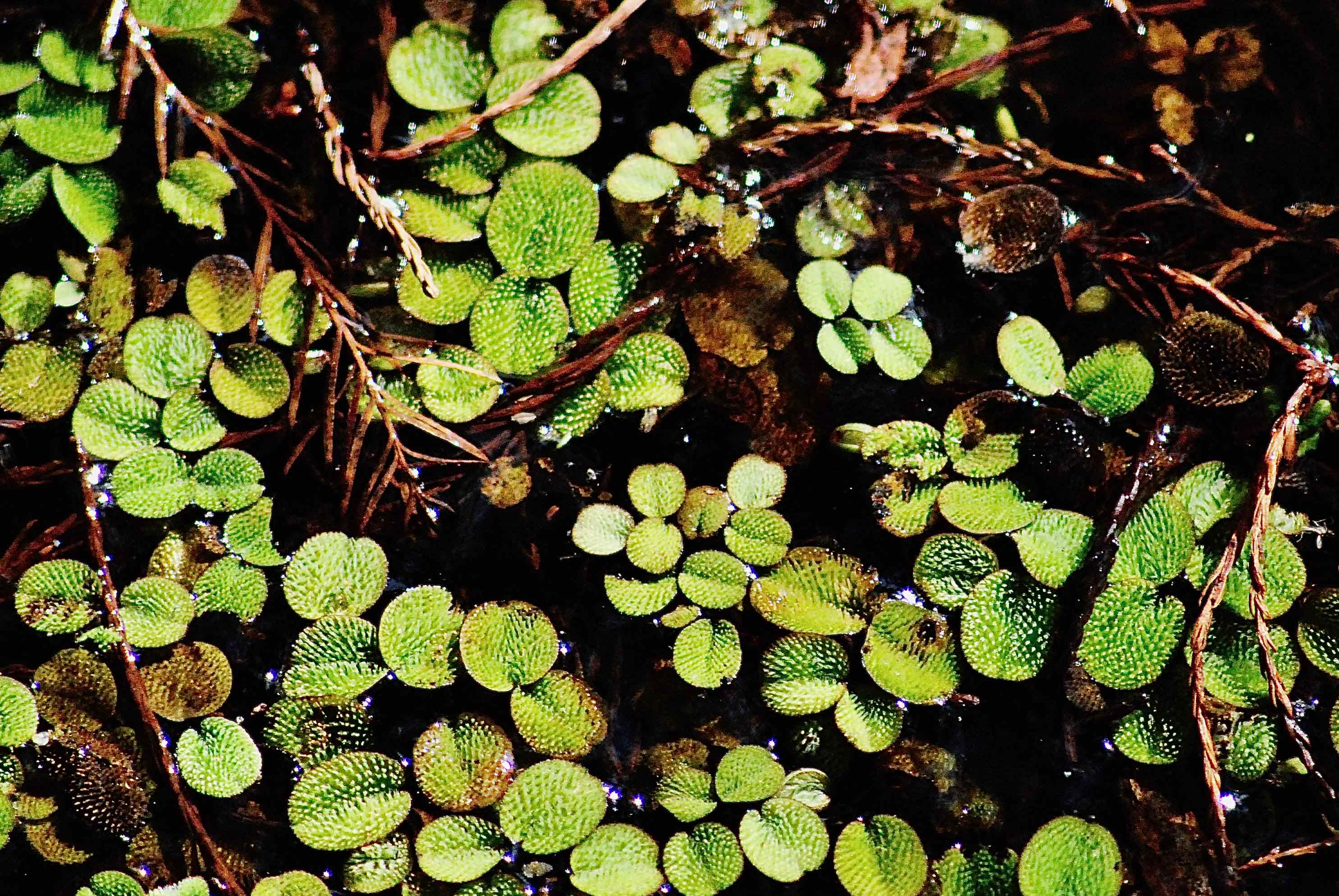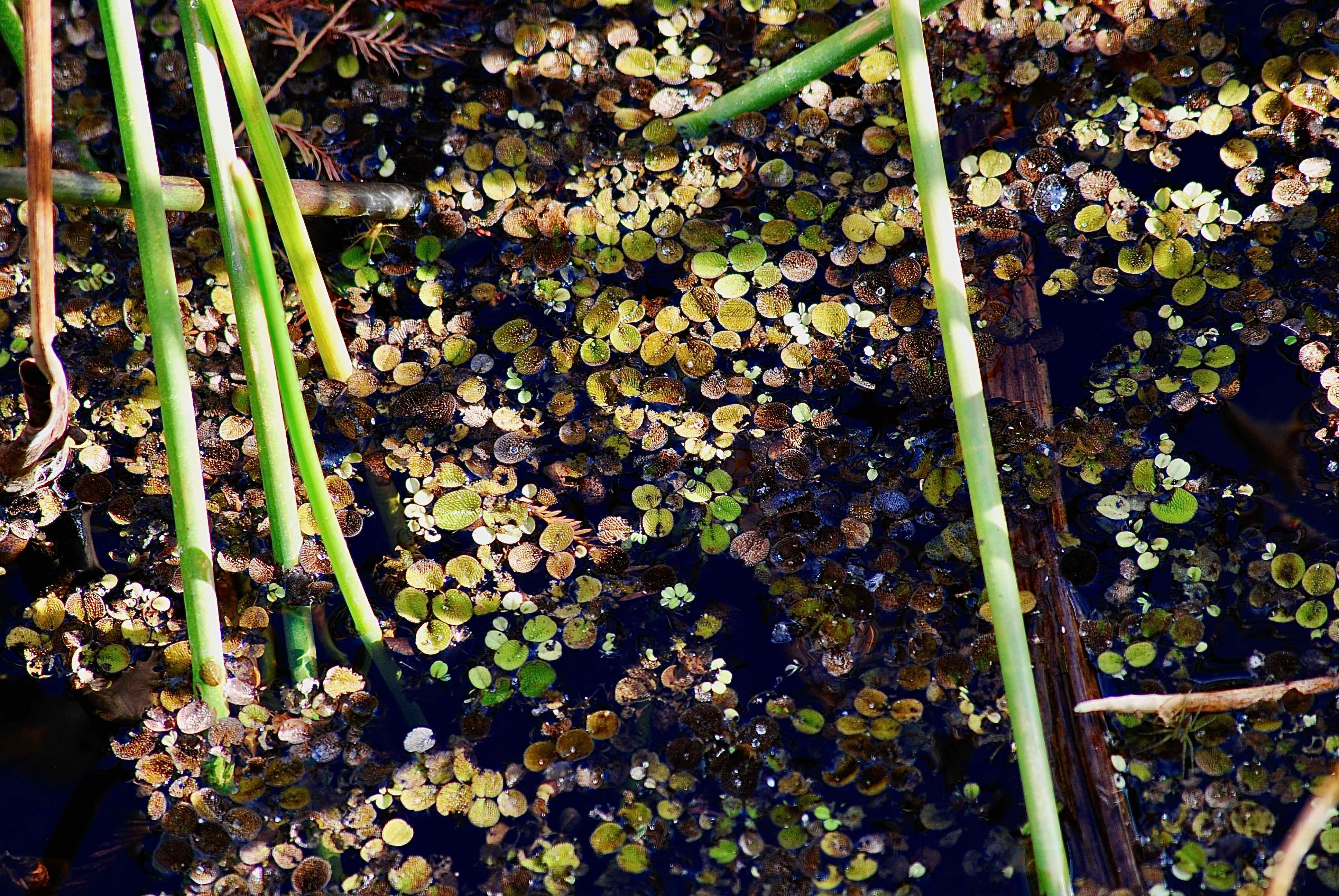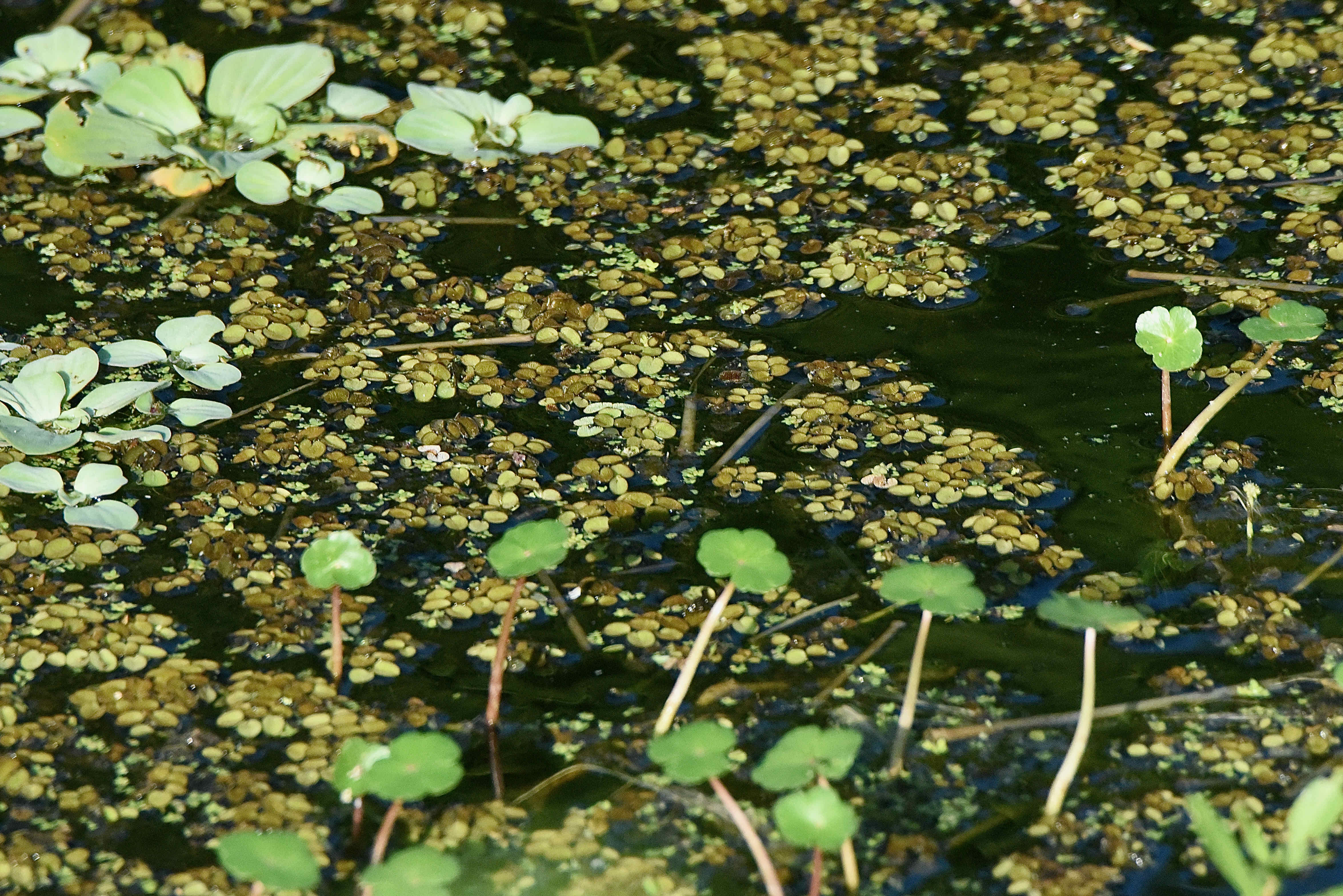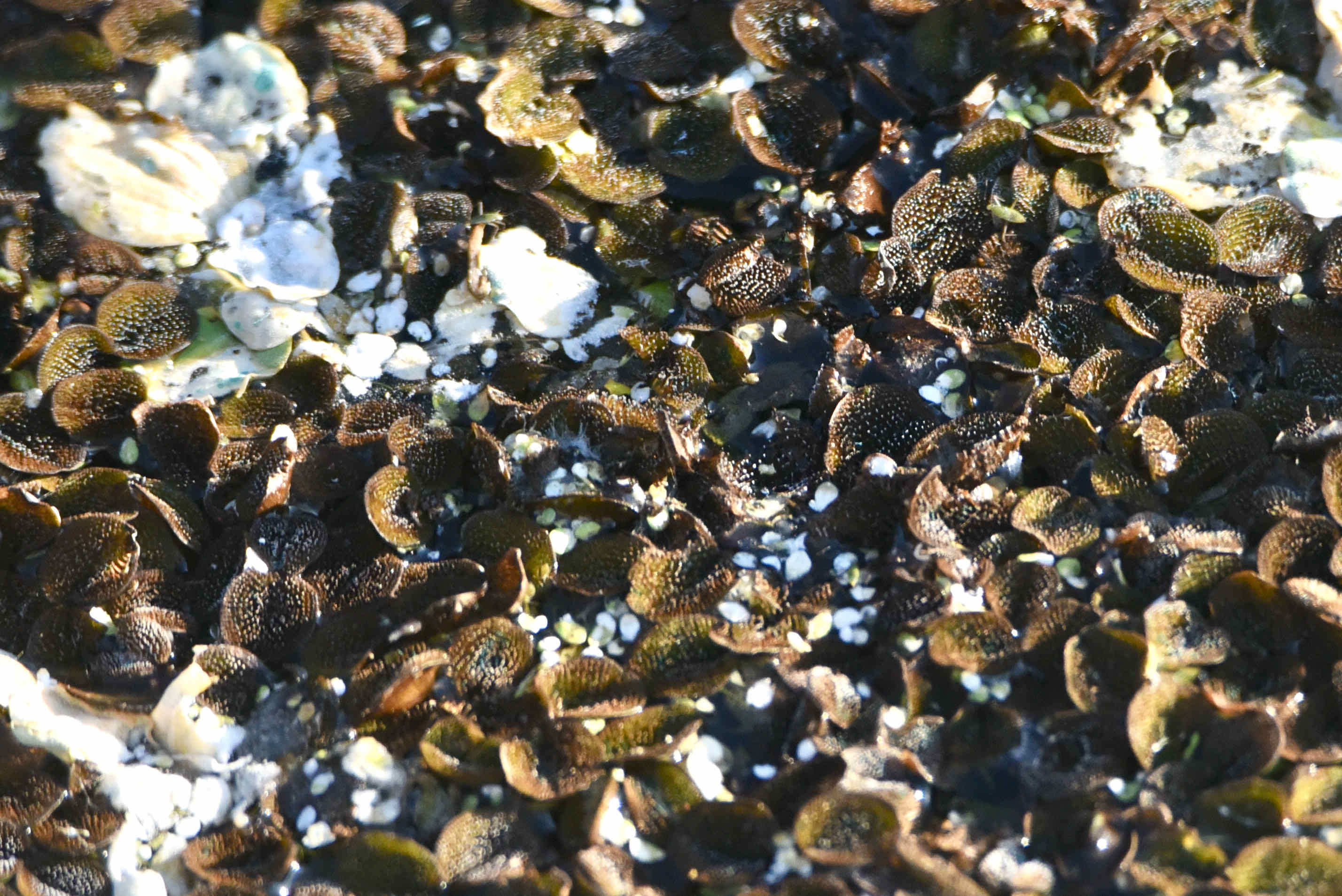
Water fern, photographed at Loxahatchee National Wildlife Refuge, Boynton Beach, Palm Beach County, in December 2014.
This small plant looks harmless enough. In truth, it's a menace poised to do all sorts of nasty things to Florida's waterways and the plants and animals that live in them. Oh, and that includes us humans, too. This small plant is water fern, Salvinia minima, also known as water spangles. It looks similar to duckweeds, but this is a true fern and an import from South America.
The Florida Exotic Plant Pest Council lists water fern as a Category I invasive, meaning it's damaging the state's ecosystems. State officials, however, have not banned the sale of water fern, nor listed as a noxious weed.
Water fern has two paired leaves, round to elliptical in shape and covered with fine, bristly hairs. A third leaf is submerged and cut into filliments. The plant is about 0.75 inches across, larger when growing in full sun. The leaves will turn from green to a rust color in full sun. Duckweeds, by contrast, are green, smooth — lacking those bristly hairs — and much smaller than water fern.
The plant floats free; what appear to be roots beneath the leaves are rhizomes, or underwater stems to which are attached sacs where spores are formed. The good news is water fern appears to be mostly infertile. Some say it is entirely infertile. The bad news is fertile or infertile, the plant reproduces through fragmenting, meaning pieces that break off a "mother" plant form new plants. And water fern can reproduce like crazy this way. The thing is, nothing eats the stuff. Nothing native, anyway. Some types of carp have been used in some places to control it. Left alone, it clogs irrigation systems, fouls water intakes and interferes with power production.
When it forms large mats, water fern effectively depletes oxygen from the water, killing fish and other aquatic creatures. It blocks sunlight, killing plants that normally live beneath the surface. And when it dies and decomposes, it takes whatever dissolved oxygen remaining in the water with it. Alive or dead, it's a pest.
It is a native of Central America and South America that's found a home in North America and parts of Europe. The theory goes that it was a stowaway on a ship that used contaminated water as ballast and dumped it in the St. John's River near Jacksonville. It's also grown commercially as an ornamental for water gardens. Water fern is found throughout Florida. It's also found throughout the Southeastern United States as far west as New Mexico, and in a few northern states like New York, Massachusetts and Maryland. Unverified reports put it in Minnesota.
Other names: salvinia and floating fern. It is a member of Salviniaceae, the salvinia family.
Click on photo for larger image
Links for Water Fern / Water Spangles



